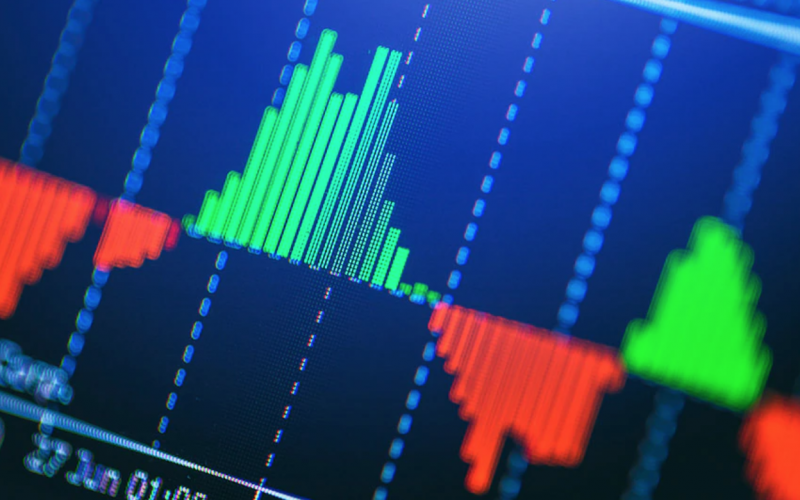by Liz Ann Sonders and Kevin Gordon, Charles Schwab & Company
Key Points
- Major indices have climbed higher this year, but not without large and swift shifts in leadership among sectors.
- Pockets of speculative excess—building since the market’s low in March 2020—have started to lose steam, but that hasn’t (thus far) translated into serious declines for the broader market.
- Some valuation metrics are near or above levels seen during the early-2000s tech bust, but there are healthier underlying fundamentals this time around.
As Shakespeare might put it, “full of sound and fury, signifying nothing” is perhaps an apt way to describe the character of the market so far this year. In a broad sense, performance among the major averages has been healthy, with all in positive territory year-to-date. However, large and swift shifts in sector leadership—along with considerable speculation in certain pockets of the market—have kept things more interesting beneath the surface. Today’s report looks at those behind-the-scenes dynamics, the marked recent weakness in speculative pockets of the market, and how that hasn’t (thus far) translated into broader equity market weakness.
Last November marked a turning point for the market in terms of leadership. Given the positive results from several COVID-19 vaccine manufacturers and the subsequent pickup in inoculations, we saw a decisive shift away from the pandemic/haven trade and toward the reopening/cyclical trade. To put index “labels” on them, the former was generally characterized by the NASDAQ (the leader in 2020), while the latter by the Russell 2000 (the laggard in 2020). The churn has at times—particularly in the past few weeks—been incredibly volatile, with the aforementioned groups trading places at both the top and bottom of the performance spectrum on a day-by-day basis. That said, since last November, the reopening/cyclical trade (mainly Energy and Financials) has remained intact and led the market higher; while areas like Technology and Consumer Discretionary (outperformers during the depths of the crisis) have taken a backseat. But it’s the more speculative areas of the market that have taken the biggest hits.
Hunting for a “bargain” no longer a bargain
A dominant area of the market in which speculation was rampant earlier this year was in low-priced stocks. Stocks with the lowest share prices saw massive gains which, perhaps not coincidentally, coincided with the surge in heavily-shorted stocks (GameStop being the posterchild). As you can see in the chart below, the bias towards low-priced stocks paid off handsomely into mid-February, while higher-priced stocks had more muted relative performance.
Inexpensive Stocks Surged Coming Out of the New Year…

Source: Charles Schwab, Bloomberg, as of 2/12/2021. Indexes are unmanaged, do not incur management fees, costs and expenses and cannot be invested in directly. Past performance is no guarantee of future results.
Mid-February marked a broad turning point for many speculative trades. The highest-price quintile has taken it on the chin since then. However, the success of lower-priced stocks has waned, with the lowest quintile losing some of their outperformance edge, as you can see in the chart below.
…But Have Faded Since Mid-February

Source: Charles Schwab, Bloomberg, as of 4/1/2021. Indexes are unmanaged, do not incur management fees, costs and expenses and cannot be invested in directly. Past performance is no guarantee of future results.
Hot pockets turn cold
As mentioned, interest in heavily-shorted stocks spiked heading into this year, but the trend had gained traction long before that. The same goes for non-profitable technology stocks and those most favored by retail traders. All three baskets—tracked by Goldman Sachs—are shown in the chart below. They each have had remarkable runs off the market’s March 2020 low, booking triple-digit percentage gains. Yet, after hitting their own respective peaks (marked by the dotted lines) in the past few months, they have stumbled considerably—particularly for non-profitable tech stocks.
Excess Starting to Work Itself Out of Speculative Trades

Source: Charles Schwab, Bloomberg, as of 4/1/2021. Data indexed to 100 (base value = 3/23/2020). Goldman Sachs (GS) non-profitable technology basket consists of non-profitable U.S.-listed companies in innovative industries. Technology is defined quite broadly to include new economy companies across GICS industry groupings. Goldman Sachs (GS) most-shorted basket contains the 50 highest short interest names in the Russell 3000; names have a market cap greater than $1 billion. Goldman Sachs (GS) retail favorites basket consists of U.S. listed equities that are popularly traded on retail brokerage platforms. Indexes are unmanaged, do not incur management fees, costs and expenses and cannot be invested in directly. Past performance does not guarantee future results.
The severe decline in the non-profitable tech cohort is perhaps no surprise when one looks at the sector breakdown of the index. As you can see in the following chart, there is a heavy bias towards the Technology, Consumer Discretionary, and Communication Services sectors; with all three making up nearly 80% of the index. Those areas were the essence of the pandemic/haven trade and represented the high end of the valuation spectrum. Yet, they have lost their attractiveness given the climb higher in yields and broader rotation into the reopening/cyclical sectors.

Source: Charles Schwab, Bloomberg, as of 4/1/2021. The Goldman Sachs (GS) non-profitable technology basket consists of non-profitable U.S.-listed companies in innovative industries. Technology is defined quite broadly to include new economy companies across GICS industry groupings.
We’ve seen similar speculative behavior within the initial public offering (IPO) and special purpose acquisition company (SPAC) worlds. The chart below shows the performance of newly-public companies (tracked by the Renaissance IPO Index); and SPACs (widely known as “blank-check” companies), both with and without deals announced. As you can see, new IPOs climbed a staggering 229% from the March 2020 low until mid-February and have since fallen by 17%. The two SPAC indices were created much later in October; but even from that point to mid-February, those with deals surged by 81% and those without deals rose by 34%. Since their respective peaks, all three cohorts have fallen into correction or bear market territory.
Newly-Public Companies Losing Some Hype

Source: Charles Schwab, Bloomberg, as of 4/1/2021. Data indexed to 100 (base value = 3/23/2020). Renaissance IPO Index is a diversified portfolio of US-listed newly public companies that provides exposure to securities under-represented in broad benchmark indices. IPOs that pass a formulated screening process are weighted by float, capped at 10% and removed after two years. SPACs Without Deals Index (base value = 10/2/2020) is an equal-weighted index, consisting of 143 SPACs that have separated, but have not completed a business combination. Constituents trade as common stock, warrants, and units. SPACs Deal Announced Index (base value = 10/2/2020) is an equal-weighted index, consisting of 109 SPACs that have announced, but not completed, a business combination. Indexes are unmanaged, do not incur management fees, costs and expenses and cannot be invested in directly. Past performance does not guarantee future results.
Fortunately, the unraveling of these speculative trades has been isolated and benign for the broader market thus far. We have seen some choppiness, particularly within the tech-heavy NASDAQ, which suffered a full correction from mid-February to early March. Small cap stocks have also come under some pressure since mid-March, with the Russell 2000 down more than 4% from its high. Yet, as the aforementioned speculation-driven “micro bubbles” have continued to lose air, the broader indices have tended to rebound, staving off severe declines.
2000: To be or not to be
With a rash of speculative behavior, an ever-increasing number of day-traders, and still-high valuations, it’s understandable why many comparisons have been drawn to the dot-com boom in the late-1990s, and subsequent bust in the early-2000s. A handful of valuation metrics—including the S&P 500’s forward P/E, the Buffett model, price-to-sales ratios, etc.—have either met or exceeded the sky-high levels seen in the run up to the tech bust. That has justifiably stirred up consternation among investors, but there are important caveats to note on why this current environment looks different.
Let’s first look at differentials in performance of the NASDAQ 100—which bore the brunt of the early-2000s bear market given its 83% decline between March 2000 and October 2002. The chart below shows the six-month percentage change of both the NASDAQ 100 and the S&P 500. As you can see, the former spiked last year to its highest since the tech bust. Yet, this time around, the S&P 500 moved in tandem with it. In the late-1990s, the NASDAQ 100 at one point almost doubled in six months and the S&P 500 didn’t come close to matching that parabolic spike. Consequently, the epic rise in the NASDAQ 100 led to an epic collapse, which ultimately brought down the broader market.
Tech’s Wild Swings Look Different Now vs. 2000

Source: Charles Schwab, Bloomberg, as of 4/1/2021. Indexes are unmanaged, do not incur management fees, costs and expenses and cannot be invested in directly. Past performance does not guarantee future results.
Another difference in the current environment is market breadth. The next two charts show the S&P 500 and the number of its component stocks trading above their respective 200-day moving averages. The chart below covers the three years starting at the end of 1997; and as shown, breadth had started to weaken considerably heading into the market’s peak in March 2000. At that point, marked by the dotted line, only 35% of stocks were above their 200-day moving averages.
Breadth Weakened Decisively into the March 2000 Peak…

Source: Charles Schwab, Bloomberg. 12/31/1997-12/31/2000. Indexes are unmanaged, do not incur management fees, costs and expenses and cannot be invested in directly. Past performance does not guarantee future results.
Conversely, the chart below, which covers the period since the beginning of 2018, shows that there are currently more than 90% of stocks trading above their 200-day moving averages—a much healthier backdrop as the market continues to advance. We’ve been pointing out for a while that this persistently solid breadth over the past few months has likely shielded the market from its greatest foe—frothy investor sentiment across many behavioral and attitudinal metrics.
…And Remains Considerably Strong Today

Source: Charles Schwab, Bloomberg, as of 4/1/2021. Indexes are unmanaged, do not incur management fees, costs and expenses and cannot be invested in directly. Past performance does not guarantee future results.
Tick-tock
Let’s wrap up with a look at where we stand in terms of market risks. An obvious negative for the market would be a deterioration in breadth, especially if sentiment measures continue to show excessive optimism. On the positive side, what was brewing as a risk last year—the strong performance of the “big 5” stocks in the S&P 500 relative to the other 495 stocks—has fizzled out. The largest five stocks within the S&P 500 by capitalization, grew to nearly 25% of the S&P 500 by early-September last year. The cohort’s outperformance relative to the rest of the index also peaked at that time. For the 2020 year-to-date period through September 2, the big 5 were up 65% on average, while the other 495 were up only 3% on average. Since then, there have been two significant rollovers in the relative performance of the big 5—last September, and earlier this year.
Big 5 Giving Other 495 Some Breathing Room

Source: Charles Schwab, Bloomberg, as of 4/1/2021. Big 5 stocks include Alphabet (Google), Amazon, Apple, Facebook, and Microsoft. Past performance is no guarantee of future results.
Now comes the rub: the return of the late-day selling pressure phenomenon. As pointed out by our friends at SentimenTrader (ST), the past few months have been dominated by heavy selling into the close of each trading day (typically dominated by institutional investors). The chart below shows what ST calls the Cumulative Last Hour indicator, which tracks the last hour of trading activity for the S&P 500 Index. If the fund rises during the last hour, the indicator adds one to the running total; if it falls, it subtracts one. Lately, there has been a steady erosion.
Selling Pressure Picking up in the Last Hour

Source: Charles Schwab, Bloomberg, SentimenTrader, as of 3/31/2021. The Cumulative Last Hour indicator is a cumulative advance-decline line for the last hour of trading of the S&P 500. Indexes are unmanaged, do not incur management fees, costs and expenses and cannot be invested in directly. Past performance does not guarantee future results.
Declines in the indicator coupled with new highs for the S&P 500 have preceded weakness for the market in the past—not least being the near-bear market in late-2018 and the sharp bear market last year. ST notes that the current three-month rate of change in the indicator recently dropped the most in 25 years (-4%), to a degree consistent with weak returns for the market in the subsequent two months. Although it’s worth monitoring, as with many indicators—though the signal’s direction has been quite reliable over time—there isn’t any defining level or length of decline that tells us if or when the market is set to struggle.
In sum
Pockets of speculative excess have undoubtedly stirred fears of a broader market bubble. Thus far, however, the market has continued its trek higher despite some cohorts experiencing corrections or bear markets. Pundits and investors often quiver at hearing “this time is different” when the current environment is compared to the tech bust twenty years ago. Yet, the reality is that every time is different, with unique catalysts responsible for driving euphoric behavior. That’s not to say we haven’t seen this kind of activity but, for now, the initial pricking of micro bubbles—be it in the IPO, SPAC, or non-profitable tech stocks—hasn’t been enough to bring down the broader market.
Our advice remains the same. Be mindful of not chasing speculative pockets of froth. Focus on diversification—both within and among asset classes. Consider more volatility-based rebalancing vs. more simplistic calendar-based rebalancing. Especially in the case of rebalancing, it’s a method to stay “in gear” with market trends; while adding low and trimming high along the way.















